Keynote

Prof. Minghu HAN
韓明虎 教授
Chair Professor, Shenzhen Institute of Advanced Technology,Chinese Academy of SciencesRead More
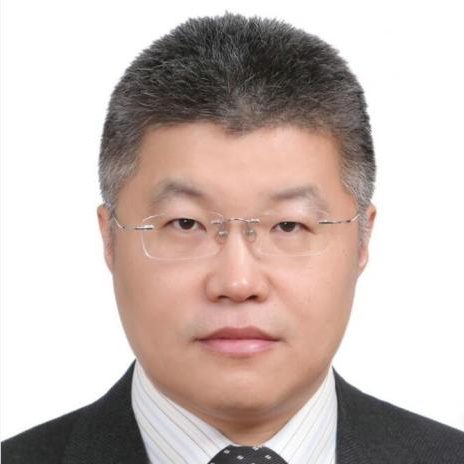
Prof. Yong LIU
劉勇 教授
Professor, Beijing University of Posts and TelecommunicationsRead More
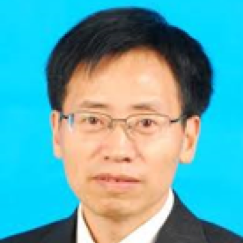
Prof. Dezhong YAO
堯德中 教授
Professor, University of Electronic Science and Technology of ChinaRead More
Guest

Prof. Jiang CAI
蔡江 教授
Professor, Guangdong Institute of Intelligence Science and TechnologyRead More
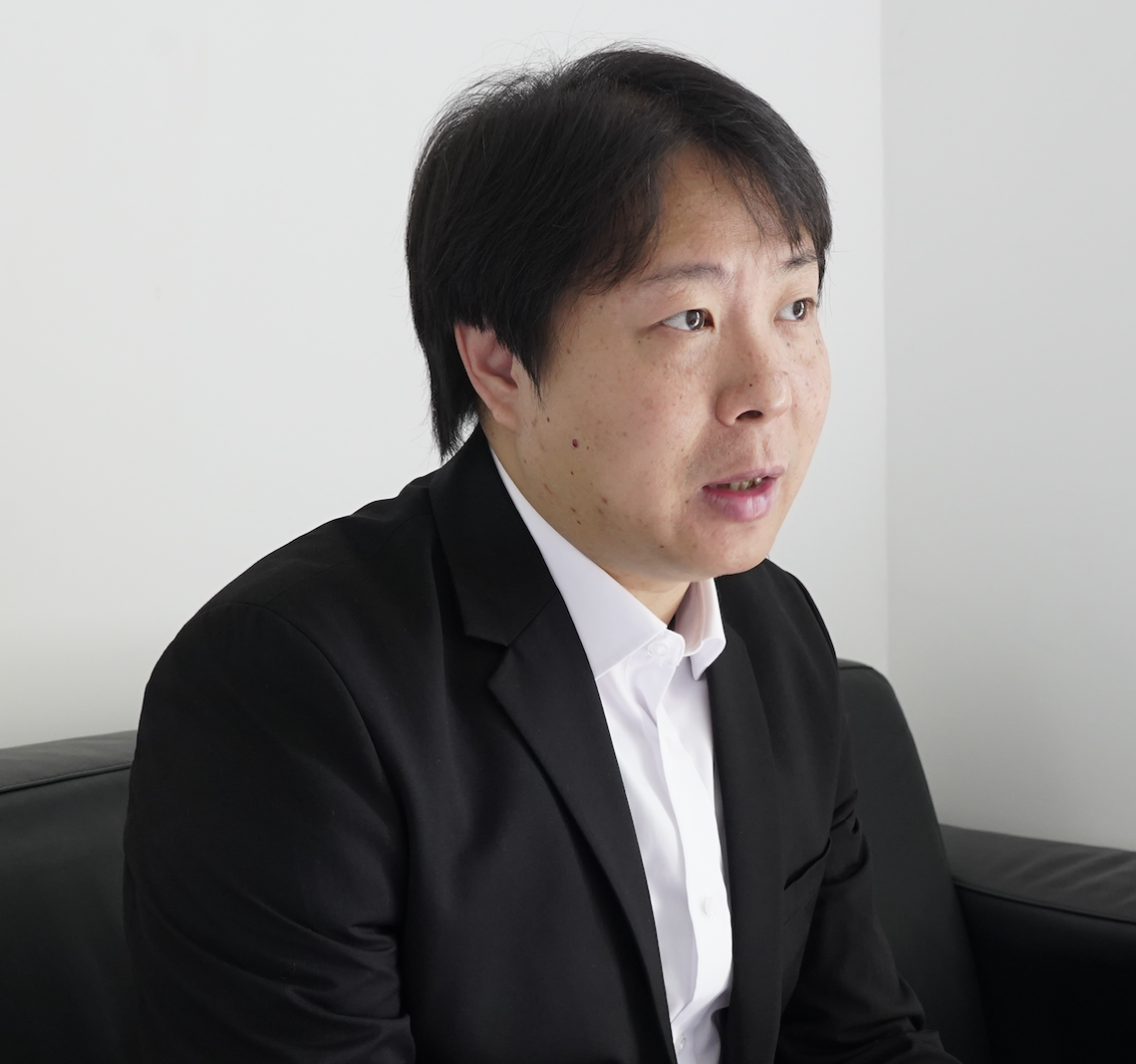
Prof. Robin CHARK
翟志恆 教授
Associate Professor, University of MacauRead More

Prof. Sophia DENG
鄧瑋 教授
Assistant Professor, University of MacauRead More

Prof. Ruiwang HUANG
黃瑞旺 教授
Professor, South China Normal UniversityRead More
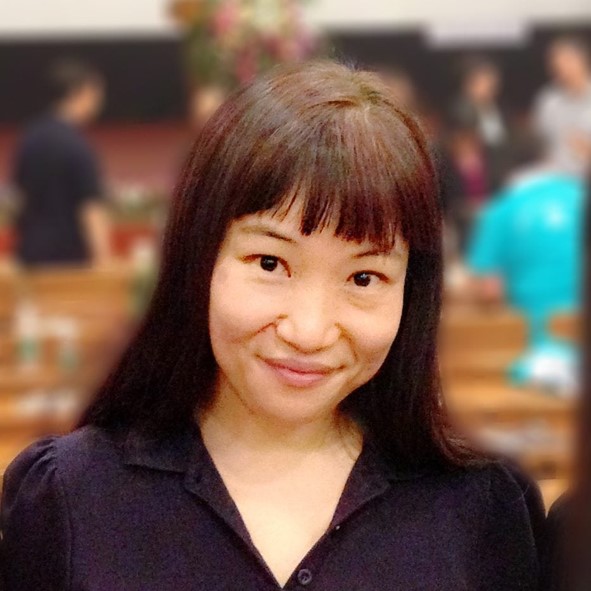
Prof. Victoria LEI
李麗青 教授
Associate Professor, University of MacauRead More
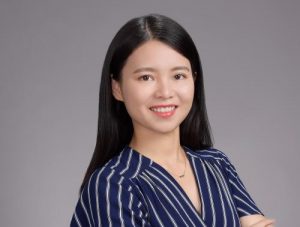
Prof. Quanying LIU
劉泉影 教授
Assistant Professor, Southern University of Science and TechnologyRead More

Prof. Jing LUO
羅勁 教授
Professor, Capital Normal UniversityRead More

Prof. Yun SHI
石云 教授
Professor, Guangdong Institute of Intelligence Science and TechnologyRead More

Prof. Yanjing WU
吴燕京 教授
Professor, Ningbo UniversityRead More

Prof. Haiyan WU
伍海燕 教授
Assistant Professor, University of MacauRead More

Prof. Zhen YUAN
袁振 教授
Professor, University of MacauRead More
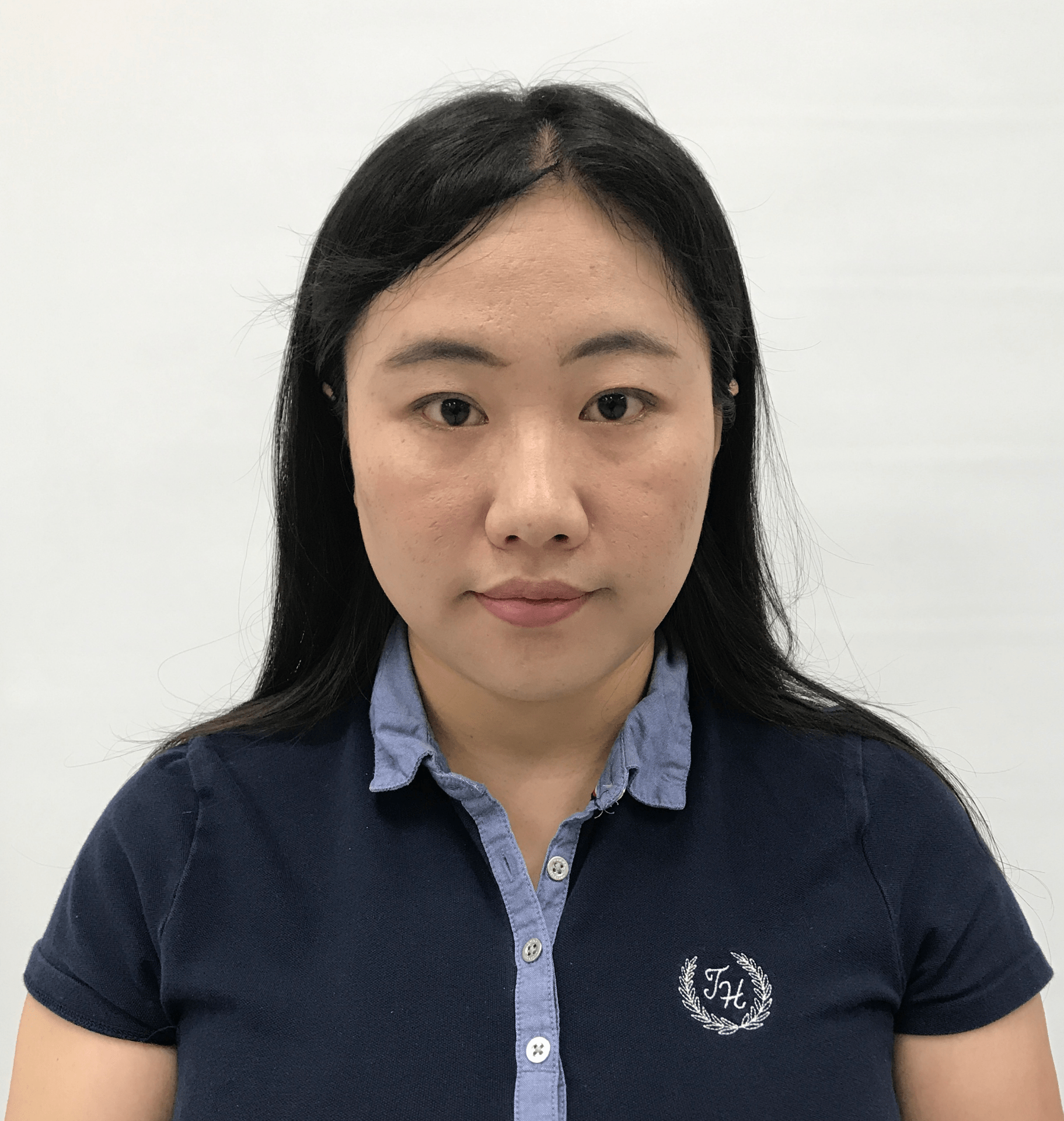
Prof. Haoyun ZHANG
張浩云 教授
Assistant Professor, University of MacauRead More

Prof. Peng ZHANG
張朋 教授
Professor, Institute of Biophysics, Chinese Academy of SciencesRead More

Prof. Yonghua ZHAO
趙永華 教授
Assistant Professor, University of MacauRead More

Prof. Dong ZHENG
鄭東 教授
Professor, The Affiliated Brain Hospital of Guangzhou Medical UniversityRead More
Speakers are listed in alphabetical orders

Prof. Minghu HAN
韓明虎 教授
Speaker Bio
韩明虎博士是中国科学院深圳理工大学(筹)生命健康学院精神健康与公共卫生系讲席教授、执行系主任,是中国科学院深圳先进技术研究院脑认知与脑疾病研究所研究员,曾任美国西奈山伊坎医学院药理科学系和神经科学系终身教授。长期从事精神疾病的神经环路机制研究及其转化应用,聚焦在抑郁症、焦虑症和药物成瘾的神经生理机制。其研究从罹患神经精神疾病的个体差异入手,建立相应的实验动物模型,揭示了长期应激环境下少数个体罹患抑郁症(易感)而大部分个体却能保持身心健康(韧性)的神经生理机制,相关工作已进入临床研究,部分成果以第一或通讯作者发表在Cell, Nature, Science, Nature Neuroscience, Nature Communications等学术杂志,其工作总被引12300多次。现为美国神经精神药理学院(ACNP)和国际神经精神药理学院(CINP)会士(Fellow)。
Talk Title
Role of BNST CRF neurons in the Establishment of Stress Resilience
Talk Abstract
Major depressive disorder (MDD) is a debilitating stress-related neuropsychiatric condition with a lifetime prevalence of 25%. Cumulative stress is a major risk factor for developing major depression (susceptibility), yet not everyone experiencing chronic stress develops MDD (resilience). It is not well understood when susceptible and resilient behavioral phenotypes are segregated during stress accumulation and what is the underlying neural mechanism. Here taking advantage of a 10-day chronic social defeat stress (CSDS) mouse model of depression, we identified that day 7-10 is a critical period for the segregation of behavioral phenotypes and that bed nucleus of stria terminalis (BNST) corticotrophin-releasing factor (CRF) neurons play a role in the establishment of resilience. Our retrospective study shows that social interaction (SI) level is similar in susceptible and resilient mice on day 1, 4 and 7, but decreased in susceptible mice with a maintained level of SI level in the resilient group on day 10. The firing activity of BNST CRF neurons has a similar pattern with the individual behavioral alterations and is significantly correlated with SI measurement. We further demonstrate a causal link between the firing activity of these neurons and phenotypical behaviors. Our data provide new insight into the role of stress responsive BNST neurons in the stress history-dependent establishment of resilience. This may open an exciting avenue for personalized psychiatry that considers individual stress history in sourcing therapeutic efficacy.

Prof. Yong LIU
劉勇 教授
Speaker Bio
Dr. Yong Liu is now a professor in the School of Artificial Intelligence, Beijing University of Posts and Telecommunications (BUPT). He received his Ph.D. degree from the Institute of Automation, Chinese Academy of Sciences in 2008 and obtained his MSc degree from Beijing University of Technology in 2005. From June 2008 to January 2021, he worked at the National Laboratory of Pattern Recognition, Institute of Automation, Chinese Academy of Sciences as an assistant/associate/full professor. He is a visiting scholar from April 2011 to March 2012 in the Brain Mapping Unit of the University of Cambridge, where he worked with Professor Ed Bullmore.
To date, he has authored more than 100 peer-reviewed journal articles (including Biological Psychiatry, Advanced Science, Brain, Science Bulletin) and has an h-index of 45. His main interests are Intelligent Brain Imaging and its application in cognitive disorders.
In recent years, his work focuses on studying generalizable, reproducible, and neuroscientific interpretable imaging biomarkers for Alzheimer’s Disease based on multi-center and multi-modal imaging.
To date, he has authored more than 100 peer-reviewed journal articles (including Biological Psychiatry, Advanced Science, Brain, Science Bulletin) and has an h-index of 45. His main interests are Intelligent Brain Imaging and its application in cognitive disorders.
In recent years, his work focuses on studying generalizable, reproducible, and neuroscientific interpretable imaging biomarkers for Alzheimer’s Disease based on multi-center and multi-modal imaging.
Talk Title
AI4AD: Artificial Intelligence to Empower Discovery Imaging Biomarkers for Alzheimer’s Disease
Talk Abstract
This talk will showcase worked examples of AI methods to derive clinically relevant neuroimaging biomarkers in Mild Cognitive Impairment (MCI) and Alzheimer’s disease. Firstly, I will outline a roadmap for studying imaging biomarkers in Alzheimer’s disease using imaging radiomics. The approach derives a regional radiomics similarity network (R2SN) based on structural MRI. Classification based on R2SN features predict clinical progress from MCI to Alzheimer’s disease, and other disease specific biomarkers (e.g. amyloid PET). Secondly, I will demonstrate a systematic analysis to verify whether the Individual Brain-Related Abnormalities In Neurodegeneration (I-BRAIN) could serve as a new neuroimaging biomarker for Alzheimer’s disease from different perspectives. The biological properties of the I-BRAIN were evaluated by relating it to the “A/T/N” scheme (Aβ, Tau, neurodegeneration). Prof Yong will demonstrate how the I-BRAIN is specific for Alzheimer’s disease compared to other neurodegenerative diseases (Frontotemporal dementia patients (FTD), Parkinson’s disease (PD), Vascular dementia (VaD), and Amyotrophic lateral sclerosis (ALS)). And I will also present a longitudinal analysis to test the sensitivity of the I-BRAIN on the individuals who converted from MCI to Alzheimer’s disease. In summary, I will introduce novel, robust and biologically plausible insights into how AI/ML methods applied to structural brain images can be used to develop biomarkers for Alzheimer’s disease.

Prof. Dezhong YAO
堯德中 教授
Speaker Bio
尧德中博士是电子科技大学信息医学研究中心主任,四川省脑科学与类脑智能研究院院长,中国医学科学院神经信息创新单元负责人,神经信息教育部重点实验室/科技部国际联合研究中心主任,全国人大代表。中国脑电联盟理事长,中国生物医学工程学会副理事长。杰青,长江学者,全国优秀教师,美国医学生物工程院(AIMBE) Fellow。入选Elsevier中国高被引学者和全球前2%科学家榜单,获国际脑电图与临床神经科学学会(ECNS) Roy John Award 和教育部自然科学一等奖。主要业绩:原创脑电零参考技术(REST)、提出脑器交互概念等。
Talk Title
From psychosomatic medicine, brain-computer interface and brain-apparatus communication 从心身医学、脑机接口 到 脑器交互
Talk Abstract
报告从心身医学(psychosomatic medicine,脑-身体器官交互)和脑机接口(脑-非生命器械交互,如脑机接口brain-computer interface)出发,引入脑器交互概念(brain-apparatus communication:BAC),举例介绍了BAC的一些典型场景,最后探讨了BAC涉及的一些基础性问题,以及脑器交互国际期刊的情况(https://www.tandfonline.com/journals/tbac20)。

Prof. Jiang CAI
蔡江 教授
Speaker Bio
Jiang Cai, work in Artificial Intelligence, graduated from Tsinghua University, (THU), Beijing, in China. CEO of Shanghai Suiren Medical Technology Co., Ltd. A specially invited researcher of Guangdong Institute of Intelligent Science and Technology, a director of Shanghai Lianhui Brain Intelligence Engineering Center, a managing director of Shanghai Oriental Brain Medicine Foundation, a committee member of ICIS2017, a special judge of Atrribute thoery special column in the IEEE Big Data Conference.
Talk Title
An attribute neural network in brain-inspired intelligence.
Talk Abstract
The summary of some problems, which must be worked out for the thinking mechanism of brain, is presented simply. At first, it is proposed that the basic function of neuron is computing, and a hypothes is about theory base of AI is introduced,the core of which is that the intelligence is summed up as 2 kinds of symbol operation or computing,then some problems of this viewpoint are pointed out; secondly, by comparing and analyzing the computing intelligence and control intelligence, it is pointed out that the intelligence degree must be measured from two aspects: self_adaptable control function, and logic inference or knowledge base system; at last, it is pointed out that the sensational nerve testing model must uniform networks, symbol and feedback mechanisms introduced above. and a sensationaI attributes testing modeI based on abstraction and integration for the demand is presented.Sensational attributes testing is summed up as sensational qualitative mapping.

Prof. Robin CHARK
翟志恆 教授
Speaker Bio
Robin is an associate professor in the Faculty of Business Administration. He is also a member of the Centre for Cognitive and Brain Sciences. His research interests lie in the area neuroeconomics, neuromarketing, behavioral addiction, and tourist behavior.
Talk Title
The brain of frontline service employees: A VBM study
Talk Abstract
We conducted a voxel-based morphometry analysis on 63 senior hotel executives’ structural brain images and compare the differences in brain structural between the front-of-house (FoH) executives and the back-of-house (BoH) ones. Our results reveal that the volume of grey matter in the occipital and fusiform face areas of FoH employees is greater than that of BoH employees and does not depend on the length of frontline experience. These regions have been implicated in the processing of facial expression information that is a critical determinant of success in frontline roles.

Prof. Sophia DENG
鄧瑋 教授
Speaker Bio
Dr. Sophia Deng is an Assistant Professor of Psychology at Faculty of Social Sciences and Center for Cognitive and Brain Sciences, University of Macau. She is the PI of the Attention Brain and Cognitive Development Lab (The ABCD Lab). She also serves on the editorial board of Journal of Experimental Psychology: General and Frontiers in Psychology. Her research focuses on the developmental interactions between categorization, attention, and learning and uses behavioral, eye-tracking, neuroscience, and modeling methodologies. Her work has been published in top-tier psychology journals including Psychological Science, Developmental Psychology, Cognitive Psychology, and Child Development.
Talk Title
Selective attention and learning: decomposing focusing and filtering mechanisms in visual and audiovisual categorization between children and adults
Talk Abstract
Selective attention is the ability to focus on goal-relevant information while filtering out irrelevant information, which is fundamental for learning across a variety of situations. In this talk, I will present a series of studies examining the role of selective attention in visual and audiovisual categorization tasks and the developmental changes of the attentional focusing and filtering components in learning. Evidence from behavioral responses, eye movements, and multinomial processing tree models suggests that (1) selective attention could be decomposed into focusing and filtering mechanisms, and (2) the two mechanisms operate differently across development, with the filtering component exhibiting protracted development in children. The findings have important implications for understanding the role of attention in the development of learning across modalities. They may also pose interesting challenges to theories and models of categorization that presume developmentally invariant mechanisms.

Prof. Ruiwang HUANG
黃瑞旺 教授
Speaker Bio
黄瑞旺,华南师范大学心理学院教授。2013-2020年华南师范大学脑成像中心主任。2009-2010年在北京师范大学认知神经科学与学习国家重点实验室工作,脑成像中心副主任。2001-2009在德国于利希研究中心(Juelich Research Center)第四认知神经科学研究所从事磁共振成像技术的研究工作;2001年在英国诺丁汉大学(University of Nottingham)物理和天文学院获得博士学位。研究兴趣为脑功能和脑结构成像的技术、图像质量控制、脑功能-脑结构-行为的关系。课题组网页:http://psy.scnu.edu.cn/a/20150624/33.html
Talk Title
磁共振脑功能图像采集与图像质量检查简介
Talk Abstract
目前,不少课题组利用磁共振成像技术、采用各种数据分析方法,开展心理学、社会认知、临床方面的研究,探讨相关的大脑神经机制。通常使用的有磁共振脑结构图像(structural magnetic resonance imaging, sMRI)、脑功能图像(functional Magnetic resonance imaging, fMRI)、和扩散磁共振图像(diffusion-weighted magnetic resonance imaging, dMRI)。无疑,图像的采集和图像质量至关重要。本讲座简介磁共振脑功能图像采集(如multiband EPI)和图像质量检查的注意事项,之后探讨提高图像质量和应用新的成像技术的可能途径。

Prof. Victoria LEI
李麗青 教授
Speaker Bio
Victoria Lei, Associate Professor, member of UM’s Centre for Cognitive and Brain Sciences, council member of the International Federation of Translators, is a literary historian, translator and conference interpreter. She obtained her PhD in English Literature from the University of Glasgow, UK and is a life member of Clare Hall, University of Cambridge. An active conference interpreter for two decades, her interpreting practice and teaching have led her to focus her research on cognition and interpreting in recent years, and it is her quest to bridge the gap between empirical research, interpreting practice and the classroom. She explores innovative approaches to translation and interpreting process research using technologies including corpus, eye tracking, keylogging, functional near-infrared spectroscopy and functional magnetic resonance imaging. Her current research interest includes brain activation associated with language processing and music processing, interaction and coordination of cognitive efforts in simultaneous interpreting, and the interaction between professional conference interpreters and their environment.
Talk Title
Exploring the interplay between language and music: an pilot study
Talk Abstract
The relationship between language and music has been the topic of debate among thinkers since antiquity. However, the exploration of the music-language relation from the perspective of modern cognitive science only started in the 21st century. Patel (2010) challenges the traditional belief that language and music are processed independently – the music functions mainly localized in the right hemisphere of the brain and language functions in the left hemisphere. Recent studies using neuroimaging technologies like ERP, PET and fMRI have found commonalities as well as differences in neural representations of language processing and musical processing. However, there is still no firm answer to the neural location of the shared resource networks for language and music.
fMRI, with its high spatial resolution, is an excellent tool for locating brain activities. However, the use of fMRI in neurocognitive investigation of language and music is limited due to various constrains of the technology, e.g. the noise generated by the scanner and its intolerance of head motion. The interdisciplinary team at UM has found feasible solutions to the problems, making it possible to conduct experiments involving listening, speaking, singing and playing musical instrument in the scanner. Furthermore, with the more advanced surface-based analysis, we are in a good position of accurately locating the regions associated with music and language processing and confirming to what extent the neural representations of language and music overlap.
Findings of the study may shed light on the origins and evolution of language, as well as having implications on practical questions such as whether training in music have impact on language development, including bilingual/multilingual development, and vice versa; and whether the neuroprotective benefits of music are associated with the modes of language processing that require extreme cognitive control.
fMRI, with its high spatial resolution, is an excellent tool for locating brain activities. However, the use of fMRI in neurocognitive investigation of language and music is limited due to various constrains of the technology, e.g. the noise generated by the scanner and its intolerance of head motion. The interdisciplinary team at UM has found feasible solutions to the problems, making it possible to conduct experiments involving listening, speaking, singing and playing musical instrument in the scanner. Furthermore, with the more advanced surface-based analysis, we are in a good position of accurately locating the regions associated with music and language processing and confirming to what extent the neural representations of language and music overlap.
Findings of the study may shed light on the origins and evolution of language, as well as having implications on practical questions such as whether training in music have impact on language development, including bilingual/multilingual development, and vice versa; and whether the neuroprotective benefits of music are associated with the modes of language processing that require extreme cognitive control.

Prof. Quanying LIU
劉泉影 教授
Speaker Bio
Dr. Quanying is an assistant professor at Department of Biomedical Engineering, Southern University of Science and Technology (SUSTech), and PI of Neural Computing and Control lab. She received the B.S. degree in electrical engineering and the M.S. degree in computer science at Lanzhou University, China. After receiving her Ph.D. degree in biomedical engineering at ETH Zurich in 2017, she moved to the US as a postdoctoral fellow at Department of Computing & Mathematical Science, CalTech. Quanying’s research interests are mainly in developing new methods for neural signal processing, and applying machine learning and computational models to solve the fundamental questions in the neuroscience field.
Talk Title
AI for neuroscience
Talk Abstract
Recent advances in machine learning and deep learning have greatly enhanced the potential of AI in neuroscience. Deep learning architectures provide powerful tools for analyzing structured data (such as brain images) and unstructured data (such as brain graph). In this talk, I will present our recent work using AI models for neuroscience. AI models are versatile for neural data processing, such as EEG artifact removal and data generation, as well as the downstream tasks such as classification and regression. Moreover, explainable AI techniques can mine neuroscience knowledge and uncover new scientific discoveries to explain the neural mechanisms of brain function and human behavior.

Prof. Jing LUO
羅勁 教授
Speaker Bio
罗劲,现任首都师范大学心理学院教授,博士生导师,首都师范大学燕京学者,《学习与认知》北京市重点实验室主任、中国心理学会秘书长。1987年进入河北师范大学教育系心理学专业学习,并于分别 1991 年和 1994年获得心理专业的学士和硕士学位;1994年进入中国科学院心理研究所攻读博士,1997 年毕业后留所担任助理研究员,并于 1999-2005年期间先后在日本电子技术综合研究所(ETL)和产业技术综合研究院(AIST)从事人类认知的脑成像研究;自2003年起任中科院心理所研究员,博士生导师,并曾兼任中国科学院心理健康重点实验室(KLMH)主任、中科院心理所学术委员会副主任等职;2011年调入首都师大工作至今。研究领域为创造性思维的心理和脑机制,曾在顿悟的认知神经科学原理方面做过一些开创性的工作,目前主要致力于综合利用各种行为科学和脑科学方法系统地研究和阐明顿悟和创造性思维的认知规律和原理,并将其应用于促进人们的问题解决能力与情绪调控能力。曾主持科技部 863 计划重点课题 1 项,国家自然科学基金面上项目 7 项,并参与科技部重点项目 2 项,中国科学院知识创新工程重要方向性项目 3 项。发表第一或责任作者的 SCI 论文 100余篇,有关科学发现被写入国际认知心理学教科书。
Talk Title
中國傳統文化智慧與創造性適應的認知神經科學原理
Talk Abstract
傳統文化與智慧可能給有關情緒調節的心理學研究帶來啟示。認知重新評估(cognitive reappraisal)策略通過改變人對不利情境的認知解釋從而達到調節改善情緒的目的,是從心理治療領域主流的認知行為療法中提取出來的核心起效成份之一,然而,這個策略卻存在兩點不足,一是這個策略的實施較多地依賴於前額葉的認知控制功能,但此功能卻極易受到應激因素的影響,從而造成認知重評在應激臨場失效;二是認知重評的情緒調節的總體效果仍有待提升。針對第一個問題,我們採用了基於中醫情緒(志)相生相剋原理的情緒調節策略(如“悲克怒”和“怒克思”等),研究在證明相生相剋策略的有效性的基礎上,進而發現這個策略因在實施中較少地需要自上而下的認知控制而不會受到應激因素的影響。對於第二個問題,我們創制了創造性頓悟性的認知重新評估新策略,將認知重新評估的情緒調節效應量提升了數倍,並部分地證明了“以不二之悟,符不分之理”的頓悟“不可或缺性”特點及其腦認知科學原理。

Prof. Yun SHI
石云 教授
Speaker Bio
Yun Shi received PhD degree in physiology at Georgia State University in 2007. His PhD work focused on the function and regulation of vascular KATP channels. He then had postdoctoral training with Dr. Roger Nicoll in UCSF where he worked on synaptic plasticity. In 2013, he joined the Model Animal Research Center, Nanjing University as a professor and principal investigator. Since 2022, he has been a senior investigator and research group leader in Guangdong Institute of Intelligent Science and Technology. He was awarded the Overseas High level Excellent Youth Talent Plan, Jiangsu Mass Entrepreneurship and Innovation Talent Plan and Jiangsu Outstanding Youth. His research interest is engaged in the mechanism of synaptic transmission and plasticity. Professor Yun Shi presided 4 NSFC funded projects and took part in 3 projects of the Ministry of Science and Technology as well as other research grants. He has been coauthored over 60 research articles in biomedical journals such as Nature, Neuron, Molecular Psychiatry, Nature Communications, PNAS etc.
Talk Title
AMPA receptors in synaptic plasticity and cognitive disorders
Talk Abstract
Long-term potentiation (LTP) has long been considered as an important cellular mechanism for learning and memory. Previous studies demonstrate AMPA receptor insertion into synapses play a critical role in LTP formation, which mostly rely on intracellular signaling. However, how AMPA receptors anker in synapse after LTP induction remains unknown. Here we have found that the amino-terminal domain (ATD) of GluA1 is required for LTP maintenance. Moreover, we show that GluA1 ATD directly interacts with the cell adhesion molecule neuroplastin-65 (Np65). Neurons lacking Np65 exhibit severely impaired LTP maintenance, and Np65 deletion prevents GluA1 from rescuing LTP in AMPARs-deleted neurons. I am going to talk about this LTP maintenance mechanism in synaptic cleft. Additionally, I will talk about AMPA receptor subunit GluA3 and AMPA receptor auxiliary subunit TARP g-8 in the cognitive disorders.

Prof. Yanjing WU
吴燕京 教授
Speaker Bio
Yan Jing Wu is a professor in neurolinguistics working at the faculty of foreign languages, Ningbo university. After receiving a degree in psychology from the school of psychology, bangor university, Yan Jing has worked in the university of Sheffield and Nottingham Trent university. His research interests include language development and language processing in both monolingual and bilingual individuals. Recently, Yan Jing has explored the neural dynamics associated with speech perception in newborns.
Talk Title
Neurodynamics of phonemic perception in neonates
Talk Abstract
Babies in uterus can hear people’s voice from outside. However, it is believed that they cannot learn to discriminate elements of speech sounds such as natural vowels until 6 months old. Using functional near-infrared spectroscopy, we examined neonates phonemic development on their first day of life. After a few hours of exposure, neonates can discriminate natural vowels played forwardly from the same vowels played backwardly, suggesting instant learning of speech sounds at birth. Moreover, the neural network underlying this postnatal leaning involved a primitive form of the sensory-motor loop that is known to support vocal immitation later during infancy.

Prof. Haiyan WU
伍海燕 教授
Speaker Bio
Prof. Haiyan Wu completed her Ph.D. at the IDG / McGovern Institute for Brain Research at Beijing Normal University. Then she became a faculty member in the Department of Psychology, University of Chinese Academy of Sciences. She worked as a visiting associate in the Division of Humanities and Social Sciences, California Institute of Technology, from 2017 to 2019. Now she works in CCBS at the University of Macau.
She is interested in exploring the mechanisms that describe and/or affect behavioral and neural responses during emotion and decision making (both for human and human-AI interaction) in social interaction. Her interest also lies in the area of the interactions between social relations cognition and languages.
She is interested in exploring the mechanisms that describe and/or affect behavioral and neural responses during emotion and decision making (both for human and human-AI interaction) in social interaction. Her interest also lies in the area of the interactions between social relations cognition and languages.
Talk Title
From virtual to real: Neural pattern for anxiety under virtual reality predicts affective responses in real interaction
Talk Abstract
Each individual experience and expresses mood states in their own idiosyncratic way, and with a huge variety of the prediction effect on social behaviours across unique individuals. The emotional responses shape our perception and prediction of others during every day social interactions. People interpret other’s emotion as more negatively or positively in the high or low volatile situation. Critical to our understanding about neurophysiological responses during emotional elicitation context and interaction thought to with emotions, we aim to provide link between natural emotional responses under virtual reality(VR) to real emotional inference under human interpersonal behaviour. Here we use human electroencephalograms (EEGs) recorded from VR and report the relationship of anxiety under VR and the emotional response (e.g., valence and arousal) and inference (e.g., prediction error) in an independent social interaction task. Our results identified different frequency bands EEG in frontal cortex show associations between interaction context and participants’ expectation of reward in social interaction, supporting links between the neurophysiological response in task-free emotional state and their inference in social behaviour.

Prof. Zhen YUAN
袁振 教授
Speaker Bio
Dr. Yuan is a full professor with the Faculty of Health Sciences (FHS)/Centre for Cognitive and Brain Sciences at University of Macau (UM). His research mainly focuses on biomedical optics, optical molecular imaging, neurophotonics and neuroimaging. Professor Yuan has published over 250 papers in high profile journals in his fields such as Neuroimage, Cortex, Cerebral Cortex, Behaviour Research and Therapy, Neuroscience, The Journal of Clinical Psychiatry, Neurophotonics, Biological Psychiatry, Journal of Magnetic Resonance Imaging, Journal of Autism and Developmental Disorders, Small, Advanced Functional Materials, Nano Letters, ACS Nano, Biomaterials, Chemical Science, Angewandte Chemie International Edition, Theranostics, ACS Appl. Mater. Interfaces, Optics Letters, Optics Express, and Applied Physics Letters. He is the editorial board member of Quantitative Imaging in Medicine and Surgery, associate editor of BMC Medical Imaging, and associate editor of Frontiers in Human Neuroscience. He is a senior member of OSA and senior member of SPIE.
Talk Title
Individual-specific functional connectivity biomarkers track dimensional and categorical features of APOE ε4 carriers or noncarriers from normal aging to Alzheimer’s disease
Talk Abstract
Although previous studies on Alzheimer’s disease (AD) demonstrated an association between specific genotypes and functional connectivity by using atlas-based approach, no identified biomarkers were linked to a patient’s present and future symptoms. Lack of accuracies in both neuroanatomical and clinical boundaries also hinder the extant work from identifying the key relationships between gene, brain, and symptoms. In this study, individual-specific functional connectivity was computed and compared between individuals with Apolipoprotein E (APOE) ε4 carriers (n = 120) and noncarriers (n = 115), which can identify neuroimaging features in different APOE genotyping groups to detect the changes of cognitive symptoms from normal aging to AD. Our findings illustrated that for APOE genotyping groups, connections among individual-specific functional regions were able to generate a stronger correlation between estimated and observed scores in multiple symptoms than those from atlas-based functional connectivity. Meanwhile, when comparing optimized estimation models among the two genotyping groups, neuropsychological scores were associated with little overlapping sets of cortical connections. In addition, between-network connectivity constitutes a major contributor for estimating symptoms in both groups. The findings therefore manifested the crucial role of individual variation in cortical functional anatomy and the meaningful relationship between gene, brain, and symptoms in AD.

Prof. Haoyun ZHANG
張浩云 教授
Speaker Bio
Professor Haoyun Zhang is an Assistant Professor affiliated with the Centre for Cognitive and Brain Sciences and the Department of Psychology at the University of Macau. Professor Zhang received her Ph.D. in 2019 from the Pennsylvania State University in Psychology and Language Science Dual Title, with a Specialization in Cognitive and Affective Neuroscience. Before joining the University of Macau, Professor Zhang has worked as an Assistant Research Professor and the Assistant Director of Human Imaging, for the Social, Life, & Engineering Sciences Imaging Center at Penn State. Professor Zhang’s research broadly aims to understand factors that contribute to age-related declines in language production and executive functions, and how bilingualism modulates these relationships.
Talk Title
Age-related differences in language production and executive functions: Effects of bilingualism and task difficulty
Talk Abstract
Older adults experience age-related declines in language production and executive functions. Cognitive and neural theories of aging argue that age-related differences in language production are related to the declines in executive functions and neural efficiency. In this talk, I will introduce a series of studies that investigate the neural bases of age-related differences in language production and executive functions. I will also talk about how manipulating task difficulty, and how lifelong experience of bilingualism would modulate these age-related differences.

Prof. Peng ZHANG
張朋 教授
Speaker Bio
Dr. Peng Zhang is an investigator and processor of State Key Lab of Brain and Cognitive Science, Institute of Biophysics, Chinese Academy of Sciences. He studies human visual perception, attention and plasticity by combining behavioral and high-resolution neuroimaging techniques (e.g. 7T fMRI and MEG/EEG). His lab recently developed novel experimental paradigms and high-resolution fMRI approaches that enabled non-invasive imaging of mesoscopic functional units in the human brain, such as cortical columns and layers, and functional subdivisions of small subcortical nuclei. Using these approaches, he revealed neural circuits and mechanisms underlying visual perception and cognition in the human brain.
Talk Title
Human tectopulvinar pathway automatically detects collision trajectory without attention and awareness
Talk Abstract
Detecting imminent collisions is essential for survival. Using high-resolution fMRI, we investigated subcortical pathways for detecting collision trajectories in healthy human subjects and hemianopia patients. When healthy participants focused their attention on a central fixation task, the superior colliculus (SC) and ventromedial pulvinar (vmPulv) evoked stronger responses to a peripheral object approaching on a collision course with their heads compared to a near-miss trajectory. Collision-sensitive responses of the SC significantly correlated with that of vmPulv. Path analysis demonstrates that the SC-vmPulv pathway detects collision trajectory without cortical influence. For hemianopia patients with occipital lesions, the contralateral SC evoked significant response to collision stimulus presented to the blind visual field, which correlated with the collision-sensitive response in vmPulv. Stronger collision-sensitive response in the SC also is associated with better behavioral performance detecting the collision event. These findings demonstrate that the tectopulvinar pathway in humans automatically detects the collision trajectory of an approaching object without attention and awareness, supporting its important role in blindsight to biological salient visual events.

Prof. Yonghua ZHAO
趙永華 教授
Speaker Bio
Dr. Yonghua ZHAO, assistant professor, Institute of Chinese Medical Sciences, University of Macau (UM). He was awarded doctoral degree of Chinese Internal Medicine from Guangzhou University of Chinese Medicine (CM) in 2004. From 2004 to 2018, he was in charge of CM teaching, research and clinical works in Macau University of Science and Technology. As an attending physician of integrated medicine, he participated to treat patients in the First Affiliated Hospital of Liaoning University of TCM for 5 years and University of Hospital for 16 years, respectively. In 2019, he moved to UM. His research interesting mainly focuses on pharmacology of Chinese medicines and clinical trial. Dr. Zhao has hosted seven projects funded by The Science and Technology Development Fund (FDCT), and one project of National Natural Science Foundation of China (NSFC), as well as published 59 SCI papers. Additionally, he ever acquired Zhongzhu Awards for Life Science Recognizing Special Award in Teaching in 2016, and instructed student to obtain Scientific and Technological R&D Award for Postgraduates of Macao Special Administrative Region in 2012.
Talk Title
A multi-omics analysis for the prediction and auxiliary diagnosis of neurocognitive disorders among Macao seniors with Chinese Medicine biased constitution”( 多組學分析對澳門中醫偏頗體質長者認知功能障礙的預測及輔助診斷)
Talk Abstract
Study has suggested that Chinese Medicine (CM) constitution type is closely associated with susceptibility of some diseases. By statistical analysis, we found Macao seniors of Yin-deficient constitution type had a strong relationship with neurocognitive disorders (NCDs). To investigate the predictors and diagnostic biomarkers for the NCDs in the seniors, 42 individuals of Yin-deficient constitution type with different cognitive levels were recruited, and 8 individuals of Pinghe constitution type with normal cognition as control after rigorous screening of 400 elders in Macao. In the cohort study, multi-omics approaches, including metagenomics, metabolomics, and proteomics, were employed to detect gut microbiota, faecal metabolites, and urine exosomes. Compared with seniors of Pinghe constitution type, the indexes including the alteration of Lachnospira eligens, Escherichia coli, and Desulfovibrio piger by metagenomics test, Carboxylates and vitamins levels by metabolomics detection, and the expressions of eukaryotic translation initiation factor 2 subunit 1 (eIF2α) and amine oxidase A (MAO-A) by proteomic examination in individuals of Yin-deficient constitution type with normal cognition could serve as the predictors for NCD; while Enterocloster bolteae, Bifidobacterium breve, Enterococcus avium, Dehalobacter restrictus, and Ruminococcus gnavus, as well as the biosynthesis of several essential metabolites, including the aromatic amino acids L-phenylalanine, L-tyrosine and L-tryptophan, vitamins E and K, were identified as auxiliary diagnostic biomarkers. Therefore, intervention with them might be an effective therapeutic strategy for NCDs predication or the interruption of pathological evolution among Macao seniors of CM biased constitution type in the future.

Prof. Dong ZHENG
鄭東 教授
Speaker Bio
郑东,主任医师,入选“岭南名医录”,中山大学博士,研究生导师,先后晋升精神科副主任医师和神经内科主任医师。是中国中西医结合学会养生学与康复医学专业委员会委员、广东省康复医学会理事、广东省抗癫痫协会理事。主持和参与多项省级及市级课题,发表了医学论文10余篇。近几年参加编著的著作和教材有:《中毒性脑病》、《鼻咽癌放疗后放射性神经损伤学》、《物质依赖与脱瘾》、《精神障碍社区防治与康复》。获专利3项。发表SCI论文数十篇。
Talk Title
30% Caloric restriction decreases the pathological hallmarks and cognitive impairments in APP / PS1 transgenic mice
Talk Abstract
There is currently no ideal mitigation strategies for Alzheimer’s Disease (AD). While caloric restriction (CR) could be effective for AD, it is still somehow controversial and its working mechanism remains unknown. In Chinese cultural tradition, 30% caloric restriction is recommended to promote physical health. Therefore, this experiment aimed to combine the most comfortable 30% CR protocol, the most appropriate intervention time point, and animal models to inspect whether CR can effectively improve the pathology and cognitive impairment of AD, as well as its underlying mechanisms.
